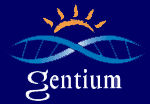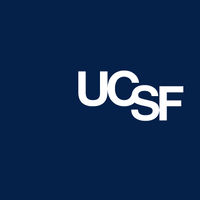预约演示
更新于:2025-05-07
PAI-1 x vWF x tPA
更新于:2025-05-07
关联
1
项与 PAI-1 x vWF x tPA 相关的药物29
项与 PAI-1 x vWF x tPA 相关的临床试验NCT06182410
Defibrotide Prophylaxis of Transplant Associated-Thrombotic Microangiopathy in Patients With High-Risk Neuroblastoma Receiving Tandem Transplants
This phase II trial tests how well defibrotide works in preventing transplant-associated thrombotic microangiopathy (TA-TMA) in patients with high-risk neuroblastoma undergoing tandem transplants (hematopoietic stem cell transplant [HSCT]). TMA is a potential life-threatening complication of stem cell transplant. TMA is a possible side effect of the chemotherapy (conditioning regimen) patients receive to help treat high-risk neuroblastoma, because these medicines can sometimes damage the blood vessel walls in the body. This damage leads to formation of tiny blood clots in organs, especially the kidney. This then causes organ damage and leads to problems with how they function. This study may help researchers learn how defibrotide may help prevent TMA before it starts, or help treat it once it starts among patients with high-risk neuroblastoma undergoing tandem transplants.
开始日期2024-08-01 |
申办/合作机构 |
NCT05987124
A Phase II Intrapatient Open-Label Dose Escalation Trial of Defibrotide in Hematopoietic Cell Transplantation (HCT) Recipients With Sinusoidal Obstructive Syndrome (SOS) Post-HCT Associated With Either Renal and/or Pulmonary Dysfunction With Either Refractory or Progressive Disease Following Defibrotide Therapy
This research study is being done to determine the safety and tolerability of increasing doses of defibrotide within a single patient with sinusoidal obstructive syndrome (SOS)/veno-occlusive disease (VOD) after hematopoietic cell transplantation (HCT) associated with either kidney and/or lung impairment that has not obtained a complete response (CR) or progressed in severity with standard doses of defibrotide.
开始日期2024-03-20 |
申办/合作机构 |
NCT04313036
Phase II Open Label Study to Assess Efficacy of 5-day Defibrotide Treatment for Hepatic SOS/VOD
Sinusoidal Obstruction Syndrome (SOS), also referred to as hepatic veno-occlusive disease (VOD), is rare but serious complication of allogeneic stem cell transplantation (allo-SCT). Defibrotide is the only FDA approved therapy to treat SOS and has significantly improved outcomes. When applied early, SOS symptoms often quickly improve and an abbreviated course can be applied. This study is looking at an abbreviated 5 day course of defibrotide in those patients with a complete response to therapy with the primary outcome being day 100 overall survival as compared to history data.
开始日期2021-03-11 |
申办/合作机构- |
100 项与 PAI-1 x vWF x tPA 相关的临床结果
登录后查看更多信息
100 项与 PAI-1 x vWF x tPA 相关的转化医学
登录后查看更多信息
0 项与 PAI-1 x vWF x tPA 相关的专利(医药)
登录后查看更多信息
465
项与 PAI-1 x vWF x tPA 相关的文献(医药)2025-04-01·Naunyn-Schmiedeberg's Archives of Pharmacology
Effect of Danhong injection on pharmacokinetics and pharmacodynamics of rivaroxaban in rats
Article
作者: Li, Jiao ; Yan, Xueying ; Wang, Siwen ; Yu, Chao ; Han, Zhaoyang ; Wu, Fan ; Cui, Mingyu ; Yin, Weihong
2024-09-01·FASEB BioAdvances
Gene expression analysis identifies hub genes and pathways distinguishing fatal from survivor outcomes of Ebola virus disease
Article
作者: Muganda, Perpetua ; Gloster, Clay ; Mensah‐Bonsu, Melvin ; Doss, Christopher
2024-08-01·Current Heart Failure Reports
The Role of Coagulation in Heart Failure: A Literature Review
Review
作者: Latif, Maryam ; Ashraf, Habiba ; Sattar, Aqsa ; Rafaqat, Saira ; Anjum, Farhan ; Gilani, Mahrukh
分析
对领域进行一次全面的分析。
登录
或

生物医药百科问答
全新生物医药AI Agent 覆盖科研全链路,让突破性发现快人一步
立即开始免费试用!
智慧芽新药情报库是智慧芽专为生命科学人士构建的基于AI的创新药情报平台,助您全方位提升您的研发与决策效率。
立即开始数据试用!
智慧芽新药库数据也通过智慧芽数据服务平台,以API或者数据包形式对外开放,助您更加充分利用智慧芽新药情报信息。
生物序列数据库
生物药研发创新
免费使用
化学结构数据库
小分子化药研发创新
免费使用



